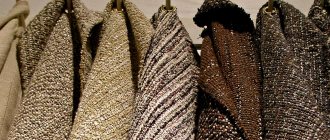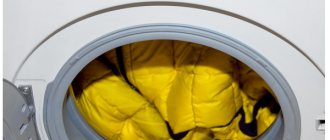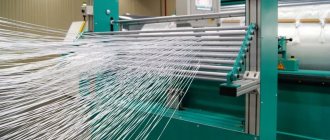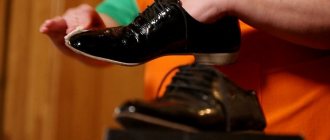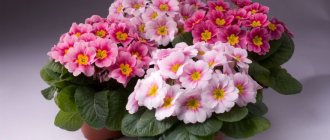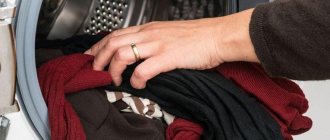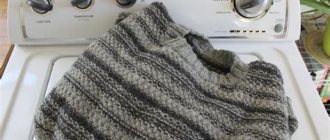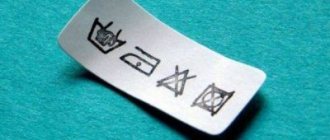Spotlessly clean children's clothes are a short-lived phenomenon. An inquisitive baby has the ability to quickly get dirty - this is due to a craving for objective knowledge of the world and a lack of self-care skills. Washing and bleaching children's clothes is a routine task, and mothers of babies do it every day.
Modern technologies make life easier - automatic machines, modern powders and stain removers satisfy any needs of housewives. However, snow-white undershirts and tights tend to take on a gray tint and turn yellow with time and too frequent washing. Bright stains from juice and fruit on children's clothing also require immediate removal. The ability to properly bleach children's clothes is a serious claim to the title of an excellent housewife. We advise you to learn this.
Washing rules
In order to properly wash various children's clothes and not make them look indecent, you need to remember the generally accepted rules. The recommendations are as follows:
- diapers and baby clothes are always washed separately from adult laundry;
- it is necessary to sort children's things by color and texture;
- wash the entire item of clothing, and not just the stained area;
- Before washing, the clothes are cleaned of any dried-on contaminants, for example, food residues;
- You can wash baby clothes only with detergents intended for newborns, the same applies to boiling.
- Things must be rinsed thoroughly and dried outside.
Advice! Before the child is 6 months old, it is advisable to wash his clothes with soap shavings.
Choice of product
Children's clothes for babies and newborns should only be washed using safe means. Common compounds that are used in everyday life can cause an allergic reaction. The following requirements apply to baby powder:
- the composition contains only natural detergent components that do not cause an allergic reaction to the skin;
- completely washed out of the fabric fibers;
- completely dissolves even in warm water.
When choosing a powder for washing clothes for newborns, you must choose products from the hypoallergenic category.
Whitening rules
To avoid allergies and damage to the product, it is recommended to follow simple conditions:
- From ready-made products, it is better to choose gel liquid powders with enzymes. Such products contain herbal ingredients that are safe for use. Stubborn stains are washed in several passes.
- When soaking, take into account the permissible water temperature level. Recommendations for ready-made products are indicated on the packaging. Water at the right temperature dissolves dirt faster and prevents the development of bacteria.
- You cannot wash diapers and onesies together with the clothes of adult family members. Things need to be sorted and processed separately.
Improper washing spoils the fabric and accelerates its wear. Products can fade, turn yellow, and clean areas absorb dirt, which increases its area.
Features of washing in a washing machine
Many automatic washing machines have a “Baby Clothes” function or something similar. Its feature is the increased volume of water used for rinsing. Thanks to this, the washing powder is completely washed out.
The temperature for washing children's clothes is selected based on the following requirements:
- diapers, bed linen – 80-90 °C;
- other things - depending on the manufacturer’s recommendations, but not lower than 40 °C.
If there is no special functionality, then the mode is selected in accordance with the type of fabric. This sets up several rinse cycles.
How to remove stains?
It is advisable to get rid of stains immediately, since once the dirt penetrates deep into the fibers, it becomes much more difficult to remove. To wash children's clothes from old stubborn stains, you can use the following recipes:
- Milk. Treat the stained area with cold water, ammonia and soap.
- Fruit juice. Wipe with a swab dipped in a mixture of water and ammonia. Then wash.
- Fruits. Mix glycerin and vodka in equal proportions. Rub off the stain.
- Blood. Pre-soak the product in cold water. Then wash with baby soap.
- Tea. Removed with a mixture of ammonia (1/2 tsp) and glycerin (2 tsp).
Before use, you need to test the selected product on an inconspicuous area.
How to bleach baby clothes?
Items of a sleeping set and children's clothes made of light-colored fabrics can be bleached to restore their beautiful appearance. You can bleach light-colored items of clothing using the following means:
- Maxima soap. At the same time it restores whiteness and washes.
- Gel "Hippo". Completely removes yellowness and difficult stains - juice, vegetables, tea, greens. You can pour it into an automatic washing machine and wash things by hand. If necessary, you can add it to the water when soaking.
- Oxygen bleach "Bos Plus" Oxi. Deals with stains on children's clothing already at 30°C.
To wash and return color to light-colored children's clothes, choose formulations without chlorine or any aggressive additives. They should be designed specifically for washing children's wardrobe items.
Folk remedies
Whiten your child's yellowed children's clothes using folk methods. They are completely safe and yet work well.
The following recipes are whitening:
- Soda. Dissolve 200 g of soda in 6.5 liters of hot water. Add 55 ml of ammonia. Soak things for 4 - 6 hours. Machine washable.
- Boric acid. You can wash socks, tights, and diapers with it. For 5.5 liters of water, take 45 ml of acid. Soak children's clothes for 1.5 - 2.5 hours. Then wash it off.
- Tar soap. It has disinfecting properties and removes old stains. Grate ½ piece, dilute in 1.6 liters of boiling water. Let it boil, add 25 g of soda. Immerse the diaper in the resulting mixture for ½ minute. Then wash with soap.
- Salt. Removes urine stains. Pour a basin (10 l) of warm water, stir in it 160 g of salt, 35 g of soda, 55 g of baby powder. Soak things for 2.5 -3.5 hours. Hand wash and then rinse thoroughly.
- Ammonia. Dissolve 20 ml of alcohol in 5.5 liters of warm water. Soak the item for 2.5 - 3.5 hours, wash.
- Laundry soap. Grate ½ piece of laundry soap. Dissolve it in a liter of hot water, add 17 g of soda. Bring the mixture to a boil. Lower the diaper into it (one by one) for 20 seconds. Machine wash on normal cycle.
- Vinegar. Helps remove stains and remove yellowness. Soak a cotton swab in 9% vinegar. Treat the stain area. Wash as recommended.
- Glycerol. Used for children's clothes made of light wool. Stir 1 tbsp in 150 ml of water. l. ammonia, 2 tbsp. l. glycerin. Treat stains. Wash as usual.
- Lemon acid. Dilute 1 tsp in 1 liter of hot water. white crystals. Apply to the stain and leave for 15 minutes. Rinse thoroughly.
After treatment, children's clothes should be rinsed first in warm and then in cold water. And only after that wash with baby powder.
Potassium permanganate - simple and effective
If one small stain appears on your clothes, you can remove it with this recipe:
- Dissolve several crystals of potassium permanganate in a glass of vinegar (200 ml).
- Soak a cotton pad in the solution and wipe the stain until it disappears completely.
If you need to bleach the product completely, do the following:
- Dissolve a little potassium permanganate in 10 liters of hot water until it turns light pink.
- Soak clothes in the prepared solution. It should be soaked until completely cooled.
- Rinse the laundry thoroughly.
Special bleaches
To return items to their whiteness, they can be washed with oxygen bleach in powder form. The product is suitable for all types of fabrics and removes complex stains without compromising the integrity of the fabric. In this case, the powder is completely rinsed out.
To whiten children's clothes you can use:
- Persol. The powder removes the gray tint. Suitable for diapers, hosiery and products of their natural fabrics.
- "Hippo" Effective against old stains from juices, tea, fruits and greens. For fabrics of any type.
- "Tortilla" The powder removes fruit and tea stains. Returns whiteness. For bed linen.
- "White Sails" Eliminates chocolate, strawberry and porridge stains. Gives a pleasant aroma.
- "Bos Plus" Oxi. This product can whiten things even in cold water. Completely rinses out of fabric fibers.
- "Nanny". The powder does not contain chlorine. It can be used for both hand and machine washing. Diapers, light and colored linen.
- "Vanish." Removes fresh and old stains. For white items.
- "Eared nanny." The powder does not cause allergies in the child and effectively whitens. Suitable for colored fabrics.
The following tools received good response:
- "Persol O2" TM Oxy line. The powder is used on cotton fabrics and bed linen.
- Antipyatin soap. Copes well with yellowness. Can be used on any type of fabric.
- "Pelican". Gel against various types of stains, yellowness.
- BioKleen. Oxygen bleach is effective against various types of stains.
Children's washing powders with a composition that is safe for babies are also offered by expensive brands, for example, Amway, Garden, BabyLine, Sodasan.
Everything you need to know about stain removers
What are stain removers made of?
In this section, we will dwell in detail on the main active ingredients that can be found in stain removers and indicate the important nuances of their use.
Oxygen-containing
As mentioned above, most children's products contain oxygen-containing agents: hydrogen peroxide - in liquid forms, sodium percarbonate and perborate - in powders.
The principle of their operation is simple: oxidation of pollution products occurs, and the resulting substances are easily removed from the surface of the fabric. Stabilizers and activators are added to oxygen stain removers. These components allow the product to be stored longer and work at different temperatures - from room temperature to 90 ° C, as when washing cotton children's clothes.
Oxygen stain removers may contain optical brighteners, so they should be used with caution on colored fabrics.
Enzymatic
Products with enzymes cope well with organic contaminants: food, blood, natural body secretions. The composition contains one or more enzymes:
- protease – breaks down protein contaminants;
- amylase – affects starch and other carbohydrates;
- lipase – copes well with greasy stains;
- cellulase - removes yellowness and grayness from fabric.
Most enzyme stain removers contain multiple enzymes, so you don't have to worry about what to use to remove stains on baby clothes. Their features: optimal operation in water of 40 ° C and the need for prolonged contact with the fabric to completely remove dirt. Such products are well suited for cotton or synthetic clothing, but wool and silk fabrics are prohibited from being treated with them.
Adsorbent
Some stain removers contain adsorbents - substances that bind polluting particles and prevent them from sticking to the fabric again. Some of them help to clean the item even without washing: you need to apply the composition to the stain and brush it with a brush. Adsorbents are suitable for colored and white laundry made from any fabric, but only work on fresh soil.
Solvents
Stain removers for combating old stains often contain glycerin or alcohols. Such chemicals react with fat, resins and paints and help save your favorite thing even in hopeless cases. They are recommended for processing thick colored or dark fabrics.
Surfactant-based stain removers
Surfactants are often a concern for parents, but they are not always something to be afraid of. Surfactants are divided into ionic - they change the surface tension of water and are recognized as unsafe for the environment, and non-ionic - modern non-toxic components. The latter include saponins and sugar alkyl polyglucoside (APG).
Non-ionic components work even in hard water at low temperatures, so they are suitable for quick hand washing of contaminated items. The operating principle of the surfactant is to envelop pieces of dirt and “tear” them off the surface of the fabric. Such substances are suitable for any materials.
Stain removers based on sodium fatty acids
This complex name hides the components of ordinary soap. Sodium fatty acids are a type of surfactant, so they stick to dirt, envelop it, and then clean the fabric from the stain. These are safe and non-toxic formulations for the baby that can be used for washing clothes and bedding.
Please note that stain remover soap must be left on contaminated fabric for a long time, and it is unlikely to help with old stains.
Auxiliary components
Many products contain complexing agents - polyphosphates, which reduce water hardness and increase the activity of stain removers. However, phosphates can cause allergies, especially at concentrations greater than 5%.
To avoid negative consequences, choose products with natural complexing agents (zeolites or polycarboxylates). If you cannot find such a product, take the option with a minimum polyphosphate content.
Another common component is optical additives. They function as bleaches, and are often added to stain removers to create the illusion of cleanliness. The ingredients lighten the stain, but do not remove it completely, and can also ruin bright colored fabrics. If possible, avoid such stain removers or buy them only for washing white items.
Selection of product by type of pollution
It is advisable to always have a universal stain remover on hand. It will help with small fresh stains on children's clothes and save mom from problems with washing.
If you want to choose a product with targeted action, use these tips:
- Oxygen-containing actives work best with coloring pigments (berries, chocolate, juices, traces of ink);
- To remove blood and urine stains, you should choose products with enzymes;
- Regular soap will help remove fresh stains of grease and soil;
- old stains from natural emissions, paint and resin are a feasible task for organic solvents.
How to iron children's clothes?
Iron baby clothes for newborns, observing the following rules:
- When ironing, you must follow the manufacturer's temperature recommendations. Overheated fabric is hard to the touch and will rub the baby's skin. To avoid confusion, before starting the process, you need to sort your baby’s clothes according to the permissible ironing temperature.
- Wash the ironing board cover every week. Ideally, it is advisable to have a replaceable one so that only the baby’s things can be ironed on it.
- Using an iron with a steam generation function allows you to simultaneously heat several layers of fabric, increasing sterility.
- Before the baby is 2 months old, items of his clothing must be ironed on both sides. But at the same time, it is important that smoothed “arrows” do not form on the fabric.
If we talk about why ironing children's things, there are many reasons for this:
- Prevention of infection of the umbilical wound. Until the navel is completely healed, clothes and any things that come into contact with the baby’s skin must be ironed on both sides.
- Imperfect immune system. Pediatricians are confident that until a baby is 3 months old, his immune system is not always able to resist the bacteria living on his skin. Therefore, the fabric must be ironed.
- Fabric softening. A baby's skin is very delicate and can be easily damaged. Even hard folds in the diaper can cause minor injuries, so in the first months of the baby’s life it is advisable to stroke them thoroughly. After ironing, the surface of the fabric becomes soft and no longer poses a threat to the child.
An equally important point is the appearance. After all, ironed textiles always look neat, regardless of the period of use.
Washed and well-ironed items retain moisture, effectively absorbing secretions from the skin glands.
The nuances of removing different types of traces
The choice of method for removing yellow stains from white clothes largely depends on the nature of the origin of the stain.
From sweat
Citric acid will help remove yellowness from sweat. To do this, you need to dissolve a sachet (150 g) of citric acid in a liter of water, heat the resulting solution to 70C and dip the stained clothes into it. After five minutes, the clothes are removed and washed as usual.
For very thin, delicate fabrics, the citric acid solution must be softened with 3-4 tablespoons of soda. You can find out about other ways to remove sweat stains from white clothes here.
From the iron
Boric acid will help revive white clothes that have been slightly scorched by an iron. To do this, wipe the iron mark on the still hot fabric with a cotton pad soaked in boric acid.
The procedure is repeated until the aesthetically pleasing rusty stains from the iron completely disappear.
This video will show you how to remove yellow iron marks from fabric:
After washing
Large amounts of powder, hard water, high water temperatures, or improper use of bleach can cause yellow stains to appear on white clothes after washing.
There are several ways to fix the problem:
- Repeated washing of items using oxygen bleach (it is added along with the powder to the washing machine).
This method is especially relevant in a situation where the cause of yellow spots is washing in very hot water. Treatment of yellow spots with a solution of hydrogen peroxide (take two tablespoons of peroxide per glass of water).
The dirt is generously moistened with the prepared product, after fifteen minutes the clothes are sent for re-washing.
Why do they appear after long-term storage and how to remove them?
Often, a washed item that has been stored in a closet for a long time becomes covered with unattractive yellow spots. Boiling it in a soda solution will help you cope with the problem.
The boiling method is not recommended for thin, delicate fabrics, wool, and knitwear.
How to arrange children's clothes in a closet?
The child should have his own wardrobe/cabinet/chest of drawers or at least a separate shelf on which only his things will be located.
The vest and shirt should be ironed from the front and back sides, then folded and placed on the edge of the ironing board. Then they proceed to the next one, which is also folded and laid out on the previous one. And this is what they do with all things. After this, the resulting stack is removed to the shelf.
It is advisable to lay out clothes, sorting them by item - vests, rompers, shirts, etc.
Taking into account the recommendations for choosing a washing powder, you can choose the ideal detergent for children's clothing. Then things will be in excellent condition, they will be easy to iron, and the child will not suffer.
Brown laundry soap
For many years in a row, despite the variety of washing powders, many women prefer ordinary laundry soap. Due to the fact that it contains no substances that irritate the delicate skin of babies, its use completely eliminates the occurrence of allergies and allows you to solve the problem of how to whiten baby diapers. There are two ways to remove stains with soap:
- Fill a basin with hot water, soak things in it, and then rub them with soap. After 30-40 minutes, you will need to first wash them and then rinse them 2-3 times. The correct result is no stains and clean water after the last rinse.
- The second method is to use machine washable soap. It is necessary to grate half the block and pour 100 ml of water into the resulting shavings for 15-20 minutes. Next, you need to pour the mixture into the powder compartment, place dirty clothes and diapers in the drum and select the desired mode.
It is worth remembering that to care for baby’s clothes you need to use only natural laundry soap without chemical bleaches. Bars of such soap must have a factory engraving of 67 or 72%.

